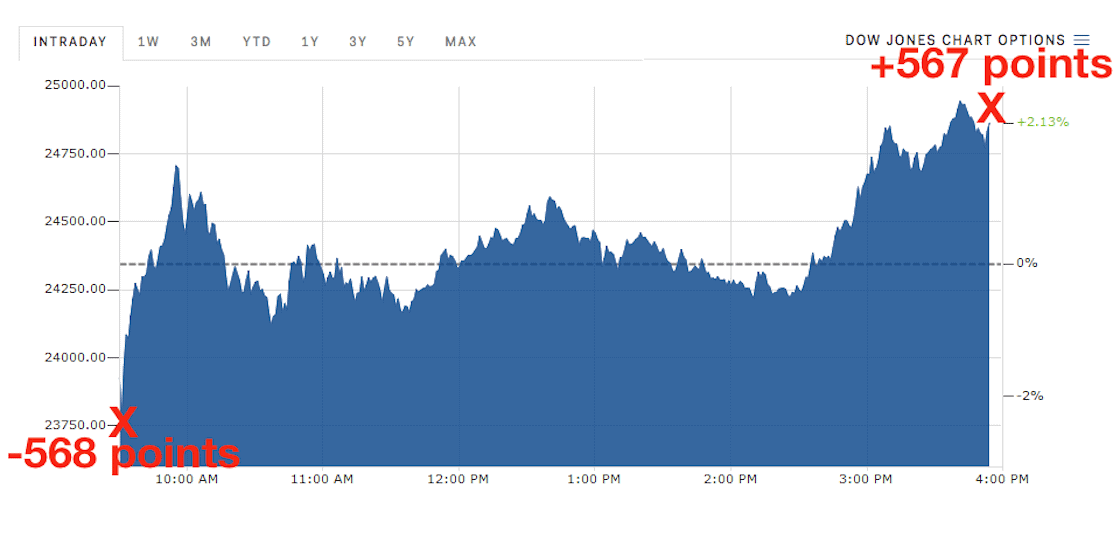
US stocks fought back on Tuesday, with the Dow Jones industrial average roaring into the market close a day after its biggest point drop in history.
After opening down 568 points, the Dow surged more than 1,000 points intraday. The index of 30 large stocks including Apple and Goldman Sachs finished up 567 points, or 2.3%.
The stock selling began Friday after a stronger-than-expected report on wages sparked worries about a return of inflation to the US. It continued this week as a combination of computer-driven trading, withdrawals from popular exchange-traded funds, and margin calls on investors who had bought stocks with debt all contributed to selling.
At its worst on Monday, the Dow was down more than 1,500 points.
One casualty of the recent market action was Cboe Holdings, which traded down as much as 15% on Tuesday. The exchange is home to the Cboe Volatility Index, or VIX, and generates as much as a quarter of its revenue from products linked to the VIX. The VIX tracks expectations for market volatility and has surged as stocks have fallen, leaving some products related to it losing value fast.
Monday’s stock market plunge caused the VIX to spike 84%, its most on record. That caused the VelocityShares Daily Inverse VIX Short-Term ETN (XIV) and the ProShares Short VIX Short-Term Futures ETF (SVXY), products designed to return the inverse of the VIX, to see their combined value shrink to $150 million from $3 billion, according to estimates from Macro Risk Advisors.
US stocks were pummeled Monday, with the Dow falling almost 1,200 points, the biggest single-day point drop in its history. The US’s two other major indexes, the S&P 500 and the Nasdaq, were down 4.1% and 3.8%. The market’s plunge caused the market’s so-called fear gauge, the Cboe Volatility Index, or VIX, to spike 84%, the most since record-keeping began in 1980.
Those losses then spread to Asia, where Hong Kong’s Hang Seng plunged 5.12% and Japan’s Nikkei lost 4.73%. The selling then moved to Europe, where Britain’s FTSE (-2%), Germany’s DAX (-2.44%), and France’s CAC (-2.57%) all fell.
Margin debt in the stock market hit a record last year, rising to at least $561 billion at the end of October.
Speaking about the big drop on Tuesday morning, Mike van Dulken, the head of research at Accendo Markets, said:
“Whilst the roots and drivers are sure to be discussed for days, it looks to emanate from a perfect storm of reasons including, but not restricted to, a strong 2017 rally extending into January, low volatility, low interest rates, over-optimism and complacency, over-leverage and financial engineering, all coming to a head as investors react to the possibility of higher/faster interest rates rises with bond yields creeping higher to jeopardize the current market situation.

